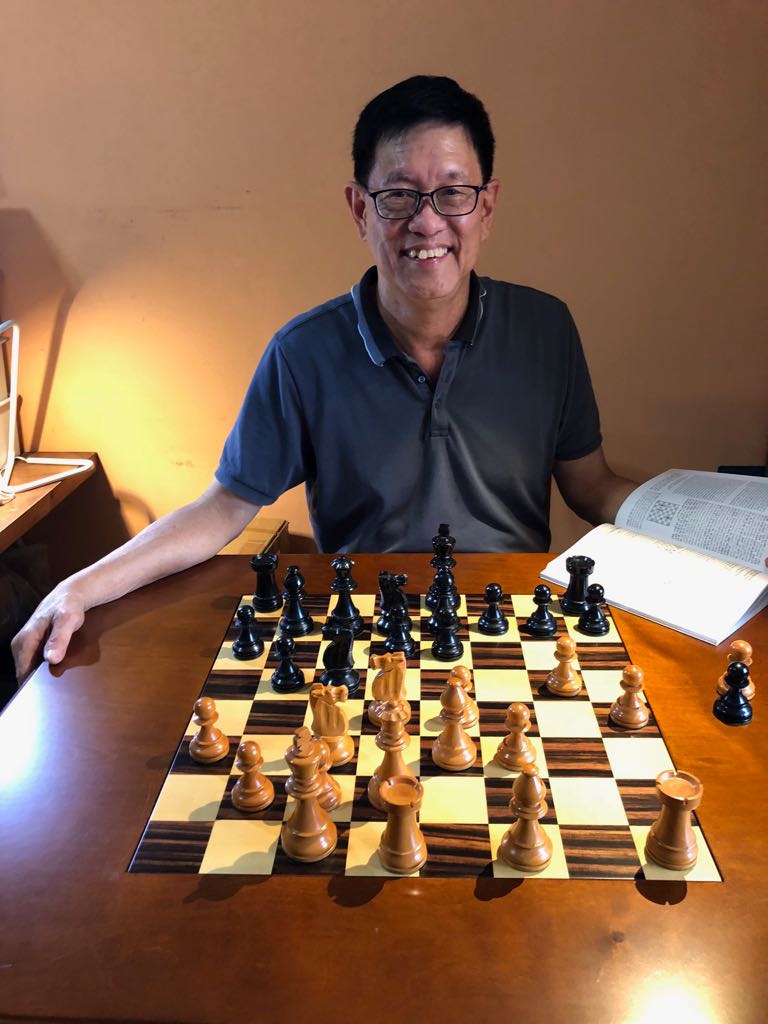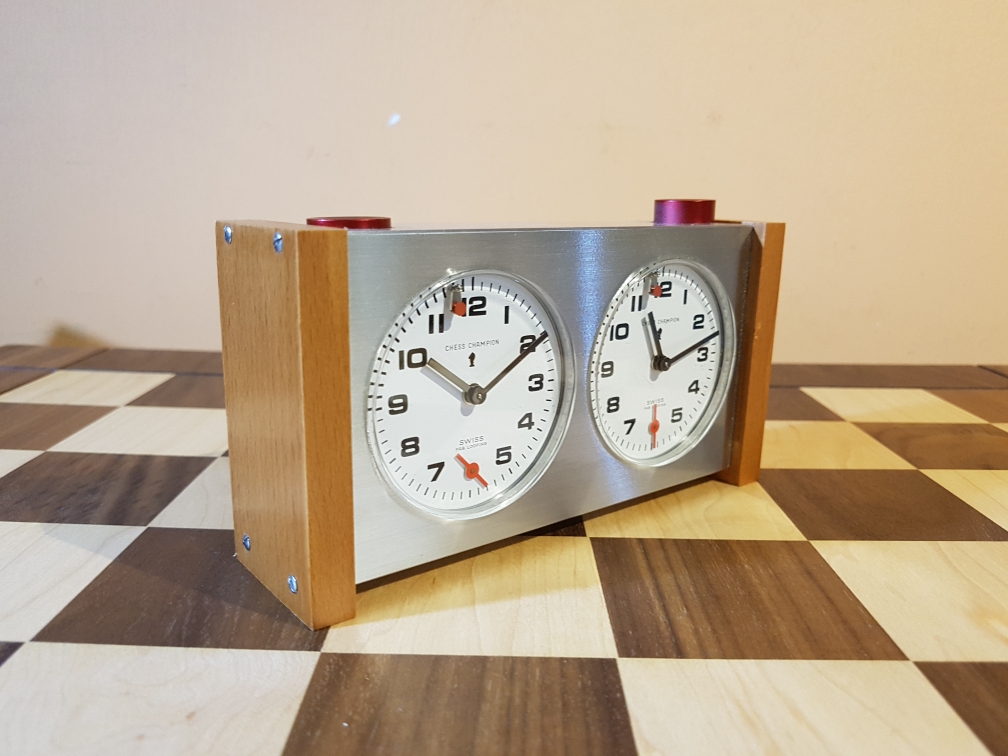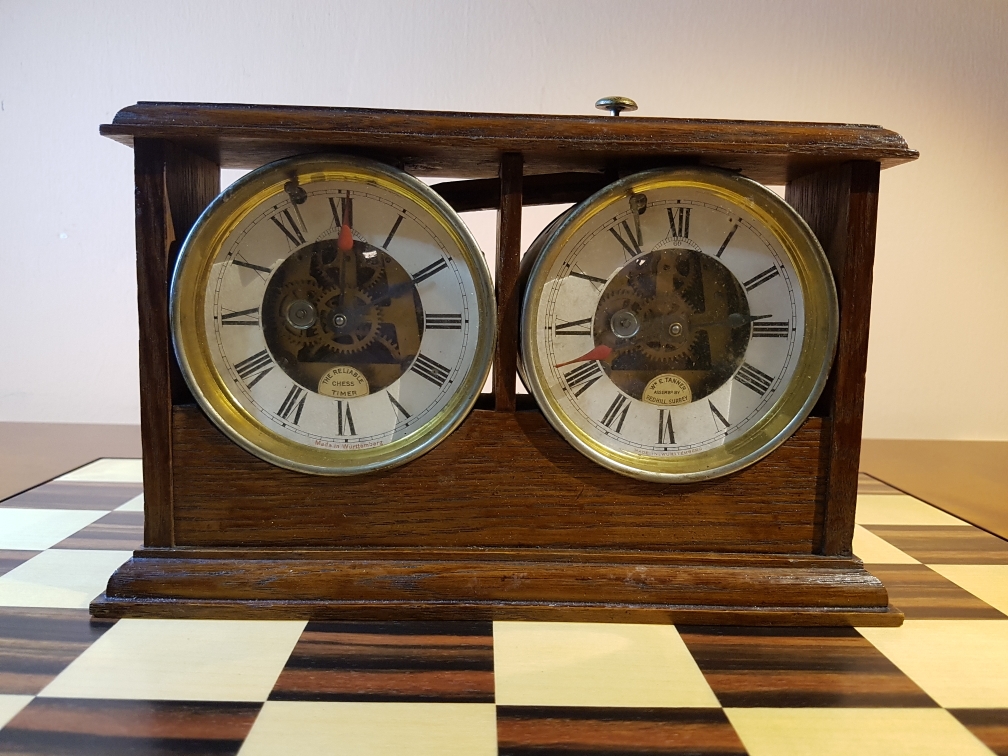Let's get physical
Chess is becoming more and more mainstream, with many niches that can make everyone happy. Some folks are primarily players, focused on achieving a certain rating or title, who compete and prepare for tournaments throughout the year. Other people like to collect chess books (I'm one of those hoarders, I confess!). Karpov, the 12th world champion loved to collect stamps and has arguably the world's largest chess stamps collection. For this story, the particular niche selected is chess sets, and specifically a prominent collector from Singapore: Stephen Kong.
About a year ago I joined a group of chess boards and pieces collectors. I must admit I was never interested in collecting chess pieces. Such activity seemed strange to me. In the beginning, when I began playing chess around 2011, I was playing on the computer, and I didn't even own a chess set when I began to go to tournaments about a year later. Then since most tournament organizers in my state and nearby states didn't provide a chess set, at a certain point around 2013 I bought a cheap plastic set and an inexpensive clock to avoid the need to borrow one at tournaments. Still, I wasn't using one at home, and I relied mainly on my computer, and of course the best purchase of my life which at that time — Chessbase 12!

Chess is like a virus which enters our system in different stages, and around 2014 one of the local tournament organizers, a very bright guy, who later would become a FIDE arbiter, began to provide wooden pieces at his tournaments. It was such a pleasant feeling to play on those pieces. I saw some wooden chessboards and pieces online, and I bought a set. As with shopping for the right laptop (my true and inseparable friend, a kind of extension of myself) it took quite some time, perhaps a month or two before finding just the right shape, colour and size for my taste. And then the board. Yet I succeeded and began to study chess in 'first class'. It was nice enough that I didn't bring it to tournaments, for fear other players might damage my treasure. I'd seen casualties of war before.
As we can notice the piece [at right] is not in true ebony wood, otherwise when broken the inside of the wood would still be Black, but the advantage is that I found this new chess set for a very affordable price of just $59 during Black Friday, the special day after Thanksgiving when Americans enjoy materialism and capitalism at its best.
Recently I played a match against another strong player in my state, and I blew him off the board, thanks to my opening preparation (credit to ChessBase DVDs!) but when my opponent resigned, I told him clearly he didn't lose against me, but he lost against the Fischer of the first time, and he understood immediately the reference and smiling uttered: "Ah against the KIA!" Showing that chess is not merely a sport, but it is an intense spiritual activity, since my opponent immediately understood my historical reference, and connected hundreds of dots...
The same with chess sets and pieces. Studying them tell us a lot about humankind's journey through different geographical places, different cultures, and different materials. Yes, chess sets will teach you about different kinds of wood — like in the best botanical garden — while at the same time teaching us about history.
The inspiration for this article came after I read the following message from a Singapore chess friend, Stephen Kong, who is a great chess set collector, and that in my opinion represents the best of chess, not because he is a top 2700+ rated GM, but because he has learned to appreciate the highest form of chess common also in other human activities: "aesthetics."

Here his message:
My interest in chessmen collecting started way back in 1995 on a small scale basis. Not until in June 2017 when Mike John Ladzinski included me in to his group page "Staunton Chess Set vintage and new post your set" suddenly my interest grow and the collection increased exponentially.
Collecting for me is quite different from hoarding. Collecting means appreciating artifacts as symbols of human activity, as milestones, or mementos of certain cultural trends. It means cataloguing, delving into the origins, documenting if possible provenance and former owners, the uses etc. It also means preserving old things, as we are only temporary holders of them, and somebody will come after us to observe, preserve, use and question our collectors items. The more time one can devote to the collection the more one learns — about the things themselves, their background — and ultimately about ourselves as well!
It is a good idea to limit one's scope — for the simplest of reasons like space, time and money. But also because nobody can collect everything, even in a small field. A collection can be nicely rounded without being encompassing or enormous.
As a collector and lifelong chess player with some ambitions I have concentrated on the tools of the game — pieces mainly, with some boards and clocks along. That would be the mainstream in chess collecting. Other collectors might be more interested in chess variants (like Shogi, Turkish chess, Thai or Burmese chess, Mongolian chess etc.), in chess stamps, in fine literature on chess, in chess books, chess mementos, and so on.
Over the years I have collected numerous chess books and playing in overseas tournament as well, meeting new friends and visiting new places. I have tried to capture as many as possible of my collection strains in the web which has become a useful tool for comparing, buying and selling, and congregating collectors on an international scale. My aim as a collector is to understand and learn — and to provide a bit of support for others who are tramping along the same trail.
There are many parts of the above message which resonate deeply with me. Just to give one example, when I began buying a chess set, I liked the Lardy, it was amazing.

Lardy chess pieces from the S.K. collection | Photos: Stephen Kong
But then while I went on with buying different chess pieces, I discovered how my "chess aesthetic identity" was changing. I began to find the Lardy kind of primitive, no longer pleasant for my taste. Now what I really like are elaborate knights, which are still 100% knights, but with a mane, and detail, like the teeth in their mouths.

That's not a knight; this is a knight | Photo: Davide Nastasio
Let me now return to Stephen Kong, from Singapore, and ask him few questions which can enlighten us on our beloved field of knowledge, and this niche which is becoming quite popular: the chess sets collection.
DN: Which one is your oldest chess set, and why did you buy it?
SK: The oldest chess set is the Golden Castle which I have collected amongst the Jaques families because this was what I started with. The value will soar as time goes by because of its scarcity. It dates back to the 1940s. Of course, there are other old Jaques which are older than this. However, this was the only set available at the time of my collection to form the holy grail set of the Jaques legion.

Golden Castle set | Photo: Stephen Kong
DN: Which one is the chess set you like more for re-playing chess games?

SK: I like Dubrovnik 1950 as my favorite set for re-playing my chess games because of its uniqueness in shape of the chessmen. In addition, Dubrovnik Chessmen were the favorite of Bobby Fischer because the King does not impact any form of religious character. Furthermore, Bobby Fischer is my favorite hero.
Here I'd like to stop the interview for a minute to show the connection between different fields in chess, we have history, geography, the pleasure of great games. For example, I didn't remember where Dubrovnik was, I knew it was former Yugoslavia (because in my time when we studied geography in school, it was called Yugoslavia) but now the city is in Croatia.
Then talking with Stephen I discovered the chess set was especially made for the 9th Olympiad which was held in Dubrovnik. But imagine, 1950 means the Second World War just ended five years before, and many economies still shattered.

Due to political reasons, today unknown and not easily understood, the Soviet Union and all the Eastern European countries didn't participate. Practically only 16 nations played for a total of 84 players.
Compare to the last Chess Olympiad held in 2016 in Baku, Azerbaijan: There were 175 nations, and a total of 1587 competitors!
But returning to the Dubrovnik chess set, imagine how pleasant it could be to replay some of the battles of that ancient Olympiad today, like the following games which are great lessons in how to exploit pawn weaknesses, successful queenside attacks, or the power of a central passed pawn, and of course many more themes:
Click or tap a game in the list to switch games
 The Sveshnikov Variation of the Sicilian Defence is considered one of the most promising replies to 1.e4, often giving rise to sharp and complex positions which require precise and inventive play from both sides. Thus, an opening tailor-made for Alexei Shirov (FIDE World Cup finalist in 2007), who has included it into his repertoire with both White and Black and knows the mutual tricks and traps all too well.
The Sveshnikov Variation of the Sicilian Defence is considered one of the most promising replies to 1.e4, often giving rise to sharp and complex positions which require precise and inventive play from both sides. Thus, an opening tailor-made for Alexei Shirov (FIDE World Cup finalist in 2007), who has included it into his repertoire with both White and Black and knows the mutual tricks and traps all too well.DN: Which chess set has the most intriguing history?
SK: The bone set of 1849 by Official Staunton has the most intriguing history because 1849 Jaques forms the gold standard of all Staunton pieces in chessmen history. Howard Staunton established and promoted this 1849 chess pieces in boxwood and ebony in the first International Chess Tournament in 1851. It clearly distinguished and established themselves and formed the standard known as the Staunton Set. Soon the set has embellishments pioneered by Jaques of London which include the kingside stamping.

Staunton Set | Photos: Stephen Kong collection

DN: How many chess sets is your collection composed of?
SK: I have collected more than a hundred sets from the Olympiad set to the normal players set. They originate from various countries such as those of the former Soviet Union, Argentinean, Britain, Germany, Serbia, Romania etc.

Set used in the 1st Women's Olympiad held in Holland in 1957 | Photo: Stephen Kong
DN: Do you have many books which detail the history of chess sets?
SK: I have only one reference book which helps me with a detailed history of Staunton chessmen collection known as "Jaques and British Chess Company Chess Sets" by Alan Fersht.

Jaques and British Chess Company Chess Sets | Photo: Stephen Kong
DN: Since you live in Singapore, isn't Chinese chess more played than International chess? What attracted you to play International chess in the first place?

SK: Since in the primary school days at the age of 12 I was introduced to English Chess by my peers in school. It was the first chess game that I was exposed to play. As such I am more attracted to English International Chess than Chinese Chess. But soon I will pick up the Chinese chess game as well.
DN: I also know you like to collect chess clocks, could you show some, and explain why you were interested in them?
SK: I also love collecting mechanical chess clock as well.
Because I love the way they were being constructed more than the electronic chess clocks. For example, this is a Sutton Coldfieds Chess Timer.

Sutton Coldfieds Chess Timer | Photo: Stephen Kong
They were produced from 1938, and it was possible to see them used in tournaments till the 1950s. The base of wood is mahogany. It was sold also through the British Chess Federation.
 On this DVD Dorian Rogozenco, Mihail Marin, Oliver Reeh and Karsten Müller present the 8. World Chess Champion in video lessons: his openings, his understanding of chess strategy, his artful endgame play, and finally his immortal combinations.
On this DVD Dorian Rogozenco, Mihail Marin, Oliver Reeh and Karsten Müller present the 8. World Chess Champion in video lessons: his openings, his understanding of chess strategy, his artful endgame play, and finally his immortal combinations.
The next one was produced in Switzerland, in the city of Solothurn.
It was produced from around 1948 to the 1960. The type of wood encasing the clocks is called: "Blond oak." Why is this clock famous, and important to collect? This is the clock used in the Botvinnik vs Tal matches from 1960-61, and also in the famous Piatigorsky cup in Los Angeles, California in 1963 and 1966.
I'd like to show also the following lucky finding since the work of the collector is never ending! I was carefully watching Ebay adverts, and I encountered this one called "Looping clock".

I recognized immediately the clock as one made by the famous clock company: "Heuer" which later would be taken over by TAG, and then, in the end of the 1990s, would become Tag & Heuer. This particular clock was made in the 1970s.
And now comes the oldest of all. It was called: "The Reliable Chess Timer" from 1890!

This amazing clock was assembled by Tanner, in the town of Redhill, in Surrey, and the chess clock was used in most of the major chess tournaments in the early 1900s

The clock’s movements were manufactured by H.A.C. (HAMBURG AMERICAN CLOCK Co., 1883-1929). Founded in 1883 by Paul Landenberger from an earlier partnership of Landenberger and Lang, this German company produced domestic clocks of all types using American methods and many American designs. In 1892 the firm registered the crossed arrows trademark which is instantly recognizable and can be seen on the Tanner dial. The company was involved in the production of clock movements, clock parts, dials, and cases for all types of clocks. Most of these products were sold to the trade as they were not in the business of selling finished clocks. Tanner would have bought in the movements (the works) from H.A.C. and had them assembled into their branded chess clocks. The rival Jaques Congress Timers also had movements from H.A.C.

DN: Is a collector work ever finished?
SK: The work of the collector is never ending because there is so much to learn, and we continually discover new items, and the history behind them, as we go along the long and winding path of a collector
I want to thank Stephen Kong for this nice interview, let's hope to have more collectors sharing their beautiful chess sets, and the history behind.
Links









































